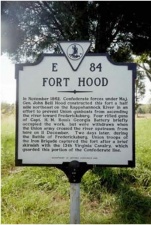Environmental Compliance Assesment Projects
GBK provides a full-range of environmental, occupational safety and health compliance services. Our interdisciplinary team of engineers, scientists, safety and regulatory specialists have helped organizations around the world improve their performance, as well as compliance profile.
Fort Hood Risk Assessment: CAA General Duty Clause and release modeling
Updated the Ft Hood CAA General Duty Clause Risk Assessment Plan for potential air releases of on-site chemicals: chlorine, ammonia and propane. This assessment included performing toxic release modeling on twelve specific sites on Fort Hood. This project was part of a larger task order which GBK project managed. In addition to the CAA risk assessment, tasks involving magnehelic installation, air emissions monitoring and digital archiving were also performed.
IMCOM-Europe: Environmental Compliance Officer
Europe-wide deployment of gap analysis, audit and training program designed to bring in US Army into full compliance with hazardous materials, hazardous waste and spill response regulations in host-nation countries. Services also relate to pollution prevention assessment, EMS awareness and dangerous goods transportation. Prior to the current Base Re-alignment And Closure (BRAC) program, GBK has provided services on 22 individual locations in four languages. GBK continues to provide services both on-site and online to those remaining US Army Europe garrisons within the IMCOM-Eurpoe region.
Invasive Species (Tamarisk) Trend Survey and Eradication: Ft Sill Ranges
Surveyed over 90,000 acres of rangeland for Ft Sill DPW Natural Resources Division and identified and recorded growths of salt cedar (tamarisk). Salt cedar is an invasive species, originally planted as an ornamental and wind breaker, which rapidly outcompetes native species, stressing water resources (up to 200 gallons per day per plant) and salinating surrounding soils. Over 1,000 individual growths were recorded some as large as 20ft+ in height. Following identification, an eradication procedure was performed by GBK's certiified pesticide applicator and service technicians using an herbicide tank mix of Habitat and MSO adjuvant. All growths were treated and ultimately a 98%+ mortality rate was confirmed.
Spill Prevention Contingency and Control Planning
Under the Federal Water Pollution Control Act (regulations found in 40 CFR part 112) facilities subject to the SPCC rule must prepare a plan to prevent the release of oil to the navigable waters of the United States. GBK, in partnership with CH Guernsey & Company completed a review and update of the Fort Sill Spill Prevention Control and Countermeasures Plan (SPCCP) and the Installation Spill Contingency Plan (ISCP). The update included assessing over 70 individual industrial-style facilities for inclusion in the plan. Each facility was mapped using ArcGIS software from available aerial imagery and information recorded from site visits. Facility diagrams included all pertinent information such as all outside-of-building hazardous materials and oil storage locations over 55 gallons, tanker pads, spill kits, oil-water separators, storm drains, direction of flow and unpaved ground. Locations of spill kits, fire hydrants and secondary containments were also recorded. Data during site visits was recorded using a Trimble GeoXT GPS handheld with submeter accuracy.
Dodge Hill Landfill: Solid Waste Landfill Monitoring, Analysis and Reporting
GBK was tasked with performing the compliance monitoring schedule at Fort Sill’s Dodge Hill Landfill. This consisted of completing the semi-annual groundwater and quarterly methane monitoring events as required by Oklahoma State Regulations. FIn-situ field results were derived at 10 wells and groundwater samples taken for laboratory analysis. All analytes were determined with EPA and Standard Method determinations. The results were subject to indepth satatistical analysis to determine exceedences. Methane monitoring was performed quarterly at 25 monitoring points. Bag samples were taken and analyzed where positive readings were identified in the field.
Environmental Site Assessment: Altus AFB Small Arms Firing Range
GBK designed and implemented a sampling protocol to determine the extent, if any, of lead contamination at a disused arms firing range associated with Altus Air Force Base. The field investigation employed magnetometers to identify historical anthropogenic contamination at a macro-scale. Micro-contamination was investigated through field samples and subsequent laboratory analysis by ICP-MS. The investigation followed EPA guidance on using data quality objectives and setting screening limits for the determination of lead contamination at CERCLA sites.
Storm Drain Discharge Fate Determination Survey
GBK has been involved with an ongoing project at Ft Sill to determine the ultimate discharge fate of floor drains on the installation. This work is being performed to ensure compliance under the National Pollution Discharge Elimination System. To date, GBK has assessed over 260 buildings, producing building and discharge data in the form of GIS facility maps and searchable spreadsheet and database formats. It has also peformed quality assurance checks on previous survey data and incorporated findings into these outputs.










